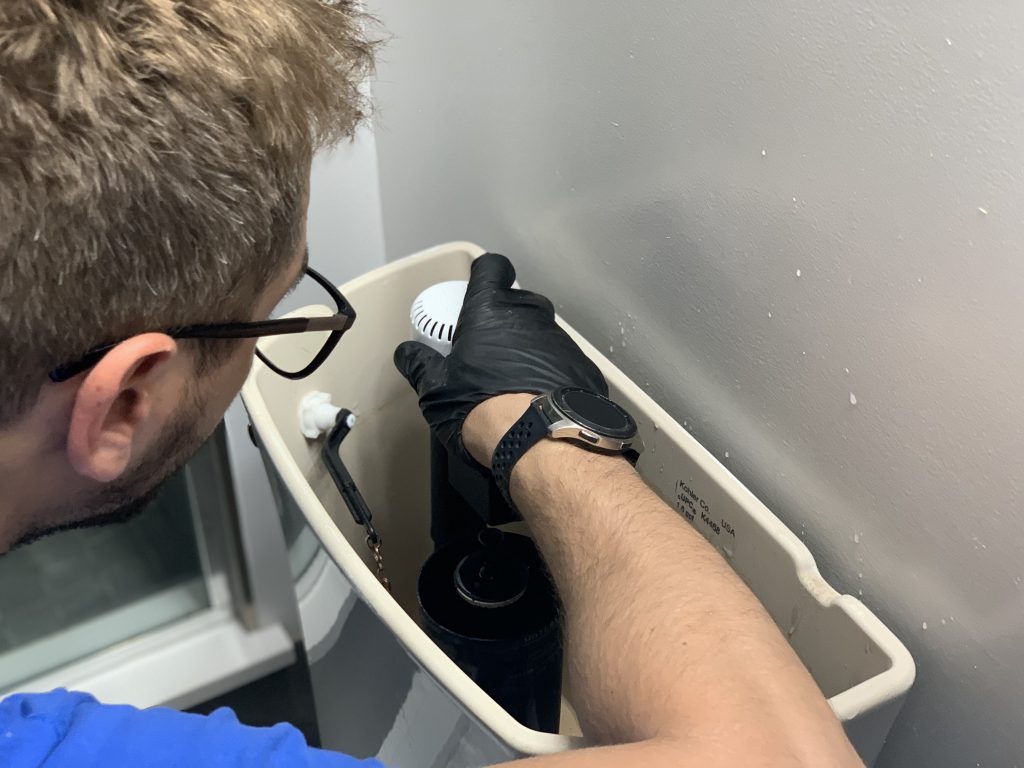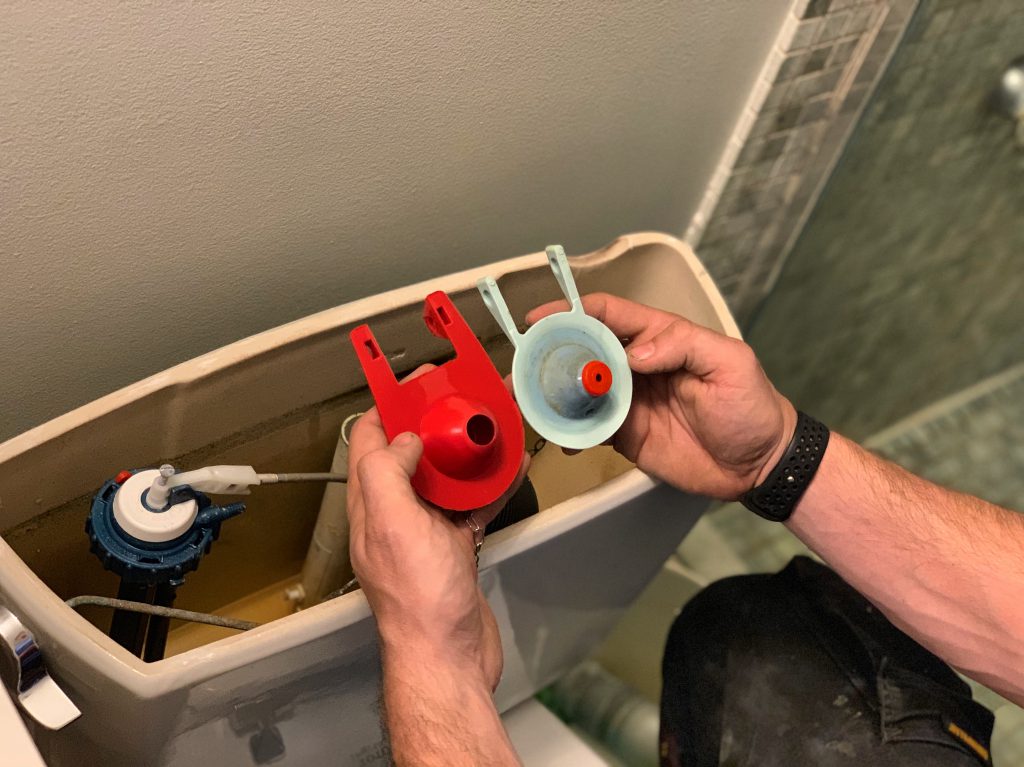Fixing a toilet can seem complicated when you aren’t sure of the problem or have any experience with toilet repair. There are some toilet problems that you can fix yourself without having to hire a plumber and others where the potential damage you could do isn’t worth the risk of not hiring a professional.
To know whether you can fix your toilet yourself, you will first need to properly diagnose the issue. We listed 5 common problems and some toilet repair tips to help you fix them yourself.
Toilet Won’t Flush
Although there can be several reasons why your toilet isn’t flushing, one of the most common is that it’s clogged. A clog can be fixed after a few good tries using a toilet plunger or toilet auger. If you notice you are having frequent clogs, you may need to have a professional take a further look at the problem.
If you know the toilet isn’t clogged, you are going to have to inspect it a bit further. Check the handle to make sure it is in the right position and properly connected to the arm that extends inside the tank.
Make sure the hardware inside the tank is in good condition and working properly. When flushing the toilet, there is a flapper that opens to monitor water flow into the bowl. If the flapper is warped or damaged, replace it so that the water intake hole can close and allow the tank to refill.
Another toilet repair tip is to check the lift chain and water level. Ensure the lift chain is in good condition and connected properly to the flapper. There shouldn’t be any slack in the chain.
For the water level, there is a float arm that monitors when to start and stop the flow of water. The float arm must be attached and adjusted at the proper height.
Without enough water in the tank, the toilet will not have enough force to flush. By having the hardware in the tank work properly and the toilet unclogged, the toilet will be able to flush.

Water Slow to Fill Up the Tank
A common reason for the toilet tank to fill up slowly is that the fill valve may need cleaning. There tends to be a build-up of debris in this valve. If after checking it you have determined it doesn’t need cleaning, then you may have low water pressure.
To ensure you have the right amount of water flow to the tank, check that the water shutoff is fully open.
If after cleaning the valve and checking that there is a maximum flow of water to the tank, it is time to call of toilet repair professional. You may have a leak in another area of the waterline.
Seals Leaking
If there is a leak around your toilet base, stop using the toilet if possible. Clean up the surrounding water first, as it could damage the flooring and surrounding areas in your bathroom.
There are a few different areas on your toilet where leaks could occur. Your best bet is to look at each area and determine where the leak is coming from.
If you see water around the base of the bowl, try tightening the tee bolts around the base. Often times, this can solve the problem.
If the leak persists, it could be that the wax ring seal around the base needs to be replaced. You can do this by disconnecting the waterline, removing the toilet from the floor, and replacing the old wax ring with a new one. After replacing the ring, secure the toilet with the tee bolts and reconnect the waterline.
Calk the base of the toilet after replacing the wax ring to keep water from building up around the bowl.

Water Constantly Running
When water is constantly running to your toilet bowl the problem is likely in the fill tank. If you notice the water level in the tank is getting lower, then the flapper may not be sealing the flush valve. The flapper may need to be replaced.
If the water level is getting too high in the tank, there may be an issue with the fill valve. Remove and clean the fill valve. For older toilet models, it may be time to replace the valve.
Once checking these areas, if the issue still persists you will want to find a professional to help.
Handle Stuck or Loose
If your handle is stuck or loose and the toilet is not flushing properly, try lifting the lid off the tank to check that the chain doesn’t have slack in it. This ensures the flap opens and closes when it is supposed to.
One of the most common problems for stuck handles is built-up residue. Remove the handle by loosening the nut on the inside of the bowl. Once removed, clean the gunk and dirt off the handle and reattach it making sure not to overtighten the nut.
Remember to check the hardware in the tank to make sure it is all in good condition and working properly. Often the arm connecting to the handle could be deteriorating or broken and needs to be replaced.
Know When to Call a Professional
With these 5 toilet repair tips, you have enough information to diagnose the common problems you may have with your toilet.
Is the issue still persisting and you aren’t sure why? It’s time to have a professional take a look. At First Chicago Plumbing we offer full-service residential and commercial plumbing. Contact us for a FREE estimate today!



